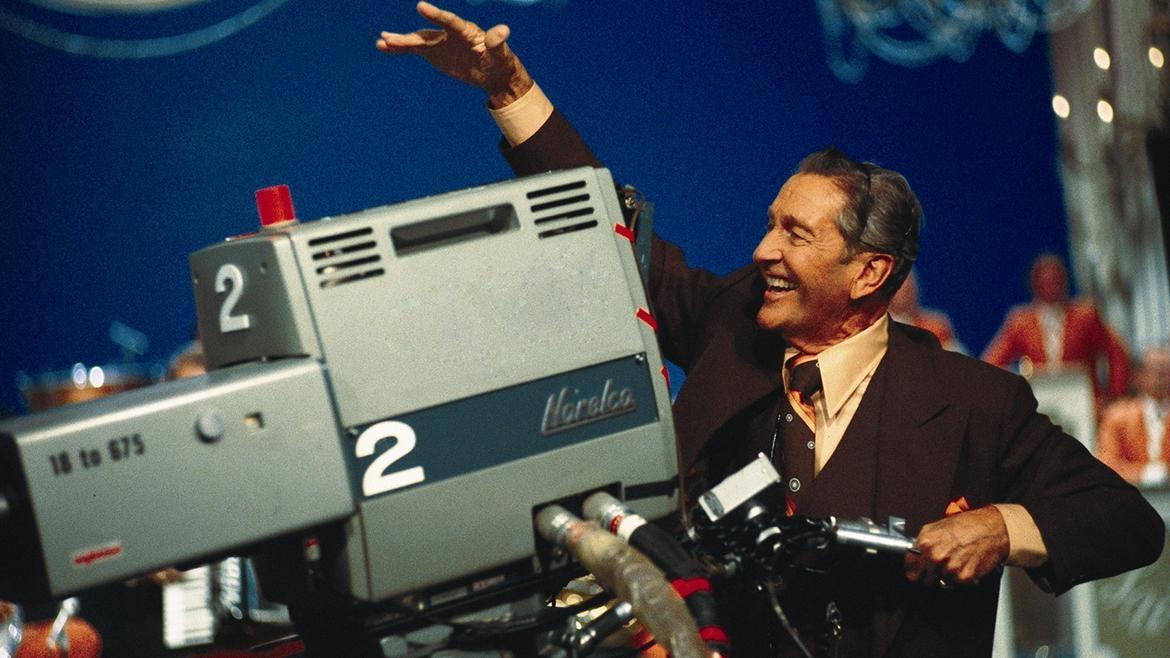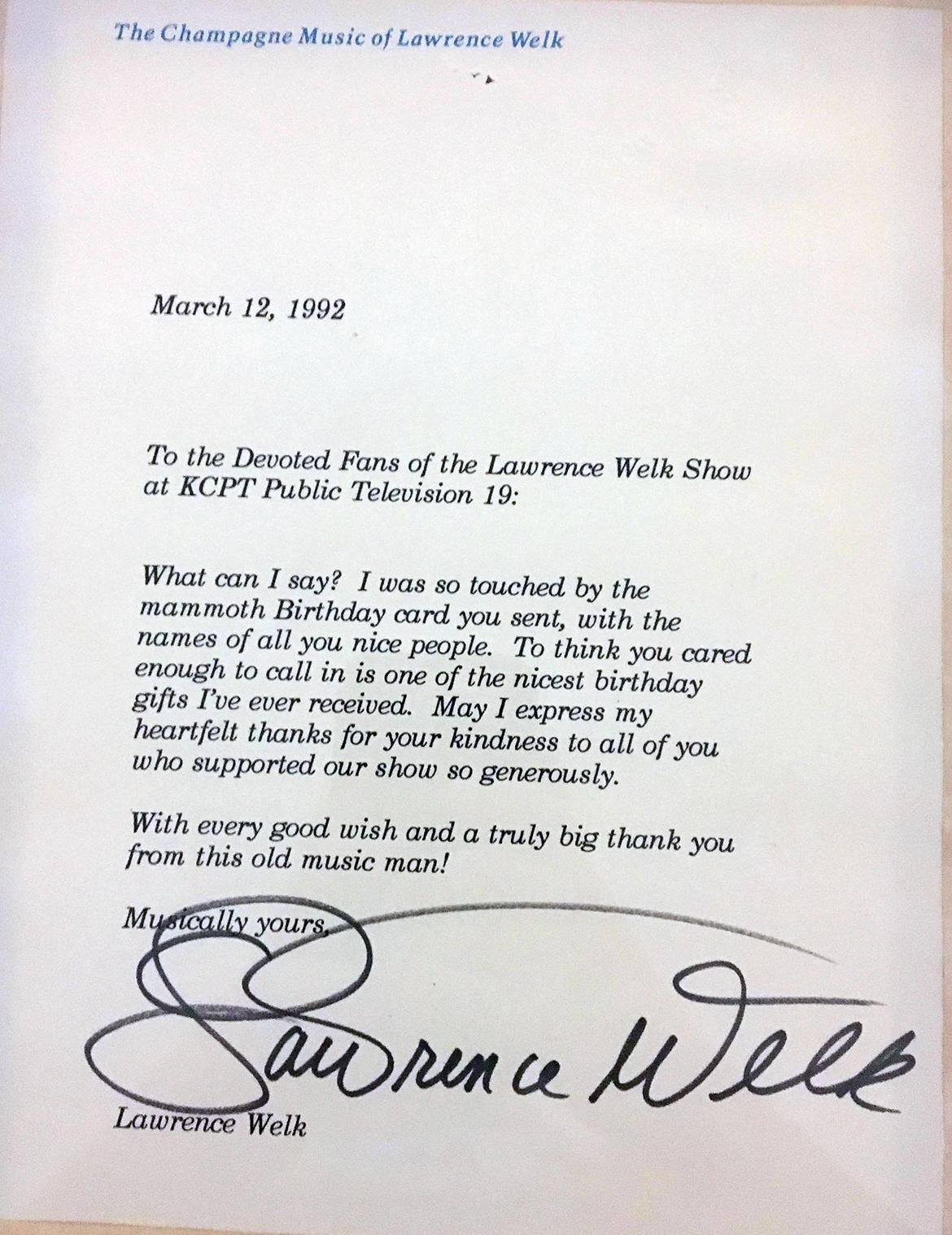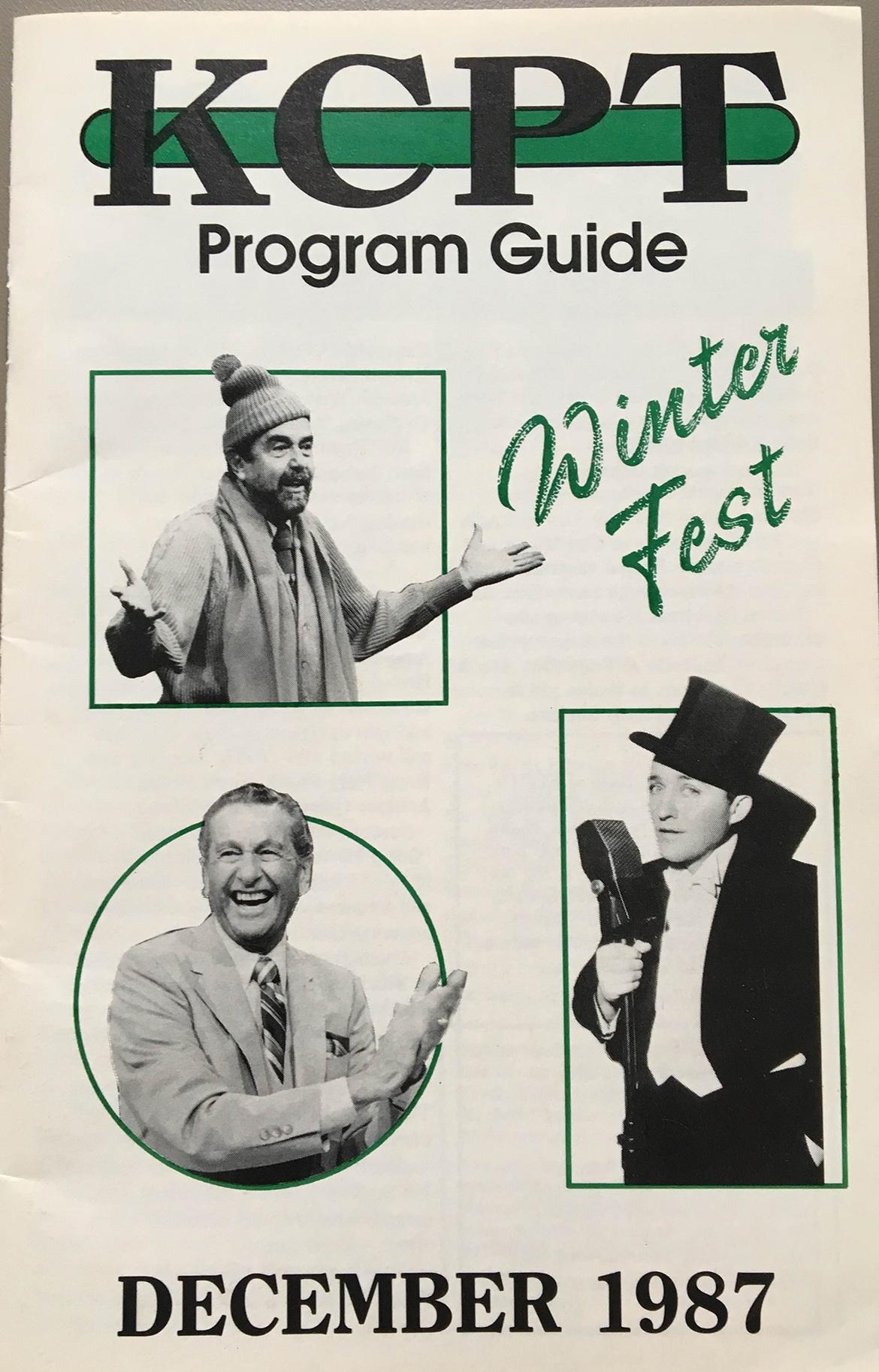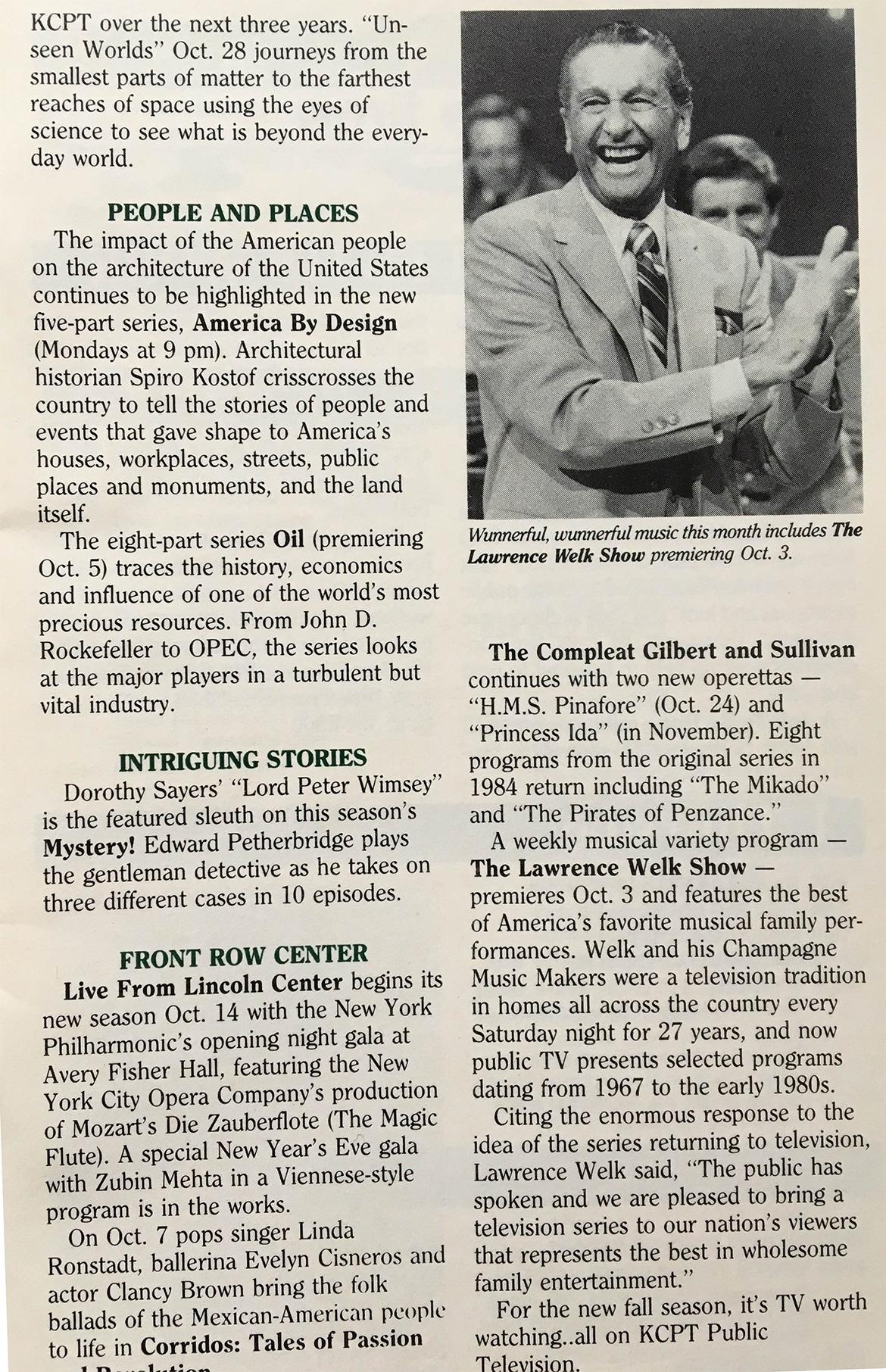A Fair-Welk Toast to One of the Longest Running Shows on KCPT
Posted on August 26, 2016 by Lindsey Foat
KCPT said its final adios, au revoir, auf wiedersehen and good night to The Lawrence Welk Show last Saturday evening.
For 29 years — barring pledge drives (like the one we’re in now – donate here) and Auction (RIP) — Welk’s musical family had a home on our station.
Now, if you’re like many people (including some in programming here at the station) you may be saying it’s about time and good riddance. But bear with me as I count the ways I’ll miss my weekly television dates with Larry Welk.
So “ah-one, and ah-two, and…”
1. Nostalgia — The Lawrence Welk Show made its national debut on ABC in 1955, and even then was devoted to celebrating a simpler, more wholesome time. Considering historical realities like segregation and stringent gender roles, I’m not sure that time actually existed, but watching Welk you almost believed there was a trouble-free and bubble-filled era. While many Baby-Boomers, like my own parents, find the chiffon and polyester costumes as suffocating as the show’s sentimentality, The Lawrence Welk Show, was my escape from reality.
3. As Jay-Z once said, “Rags to rich, I ain’t done.” — Welk was born in 1903 on a farm in North Dakota to German-speaking immigrants from Russia. One of eight kids, Welk grew up very poor. He told The Reading Eagle in 1970 that, as a kid, his yearly spending allowance was ten cents. That same article notes that by age 67, Welk’s empire was worth between $25 to $50 million. With his accordion, Welk clawed his way to commercial success and outlasted a lot critics, which brings us to No. 4.
5. The music — The “champagne music” featured on the show goes far beyond beloved Glenn Miller and big band standards. Some of my favorite performances involve more “modern” tunes. Take for example Jo Ann Castle’s version of the Statler Brothers’ “Flowers on the Wall.” It’s a song that many of us now associate with the movie Pulp Fiction, but played with Welk’s trademark light and polished style it’s absolutely magical. And of course there was time Welk mistakenly dubbed Brewer and Shipley’s “One Toke Over the Line” a “modern spiritual.”
Although The Lawrence Welk Show started on ABC, the re-runs of the show have been on public television stations since Oklahoma Educational Television Authority acquired the rights in 1987. They knew even then that the majority of their audience would trend geriatric. But public media is tasked with providing quality content, even when it may only appeal to a small and not commercially viable audience. Welk and public television has been a match that rivals the show’s dancing duo Bobby and Cissy. I know it’s time to bid adieu, so with ah-one, and ah-two…
What memories and thoughts do you have of The Lawrence Welk Show? Whether wunnerful or otherwise, share with us here.
Stay tuned for a special event coming later this fall where we’ll toast nearly three decades of Saturday nights with Welk.



